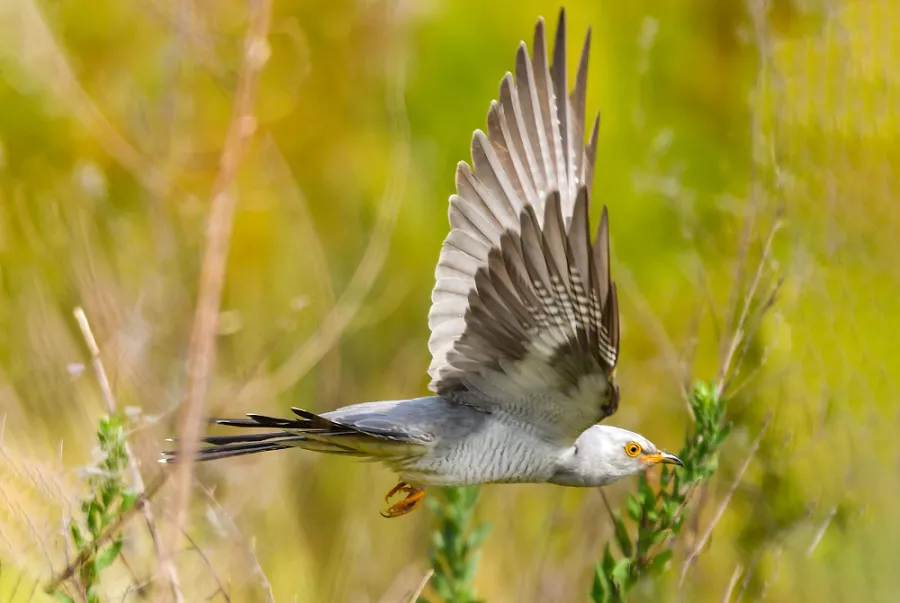The cuckoo is a bird species that belongs to the Cuculidae family, which is known for its brood parasitic behavior. These birds lay their eggs in the nests of other bird species, allowing the host bird to raise their young. The cuckoo has a distinct appearance that makes it easy to identify.
The adult cuckoo has a slender body with a long tail that has white markings on it. The wings are pointed, and the body is covered in grayish-brown feathers. The bird’s head is rounded and has a slightly curved beak. The cuckoo has a characteristic call that is used to identify its presence in the vicinity. The call is a series of two notes, with the first being higher-pitched than the second.
Male and female cuckoos have some differences in their appearance. Males are slightly larger than females and have a more prominent curved beak. They also have a slightly darker coloration on their wings and tail feathers.
The young cuckoo, on the other hand, has a different appearance from the adult. The chick is covered in white feathers and has a large gaping beak that is used to beg for food. This adaptation allows the young cuckoo to receive food from the host bird, which may not recognize that the chick is not their own.
Cuckoos are found all over the world, except in the polar regions. They inhabit a variety of habitats, including forests, grasslands, and wetlands. In some regions, cuckoo populations have declined due to habitat loss and fragmentation.
In conclusion, the cuckoo is a bird species with a distinct appearance that makes it easy to identify. Its slender body, long tail with white markings, and characteristic call are some of the identifying features. The young cuckoo has a different appearance from the adult, with white feathers and a large gaping beak. Although found in many habitats around the world, cuckoo populations are facing threats due to habitat loss and fragmentation.


 Facebook
Facebook  Instagram
Instagram  Youtube
Youtube 